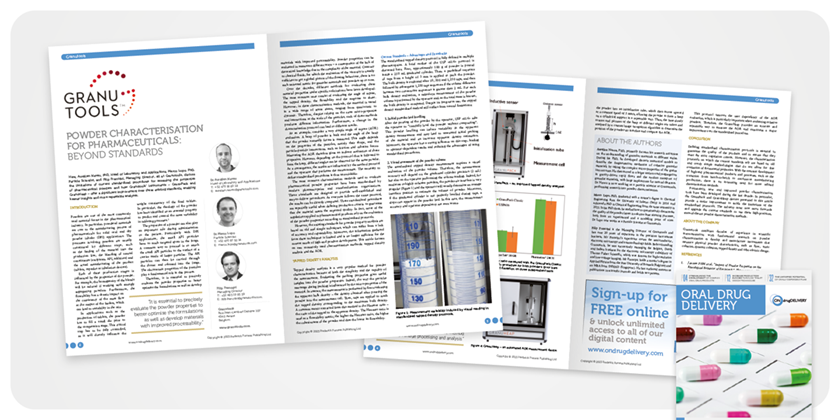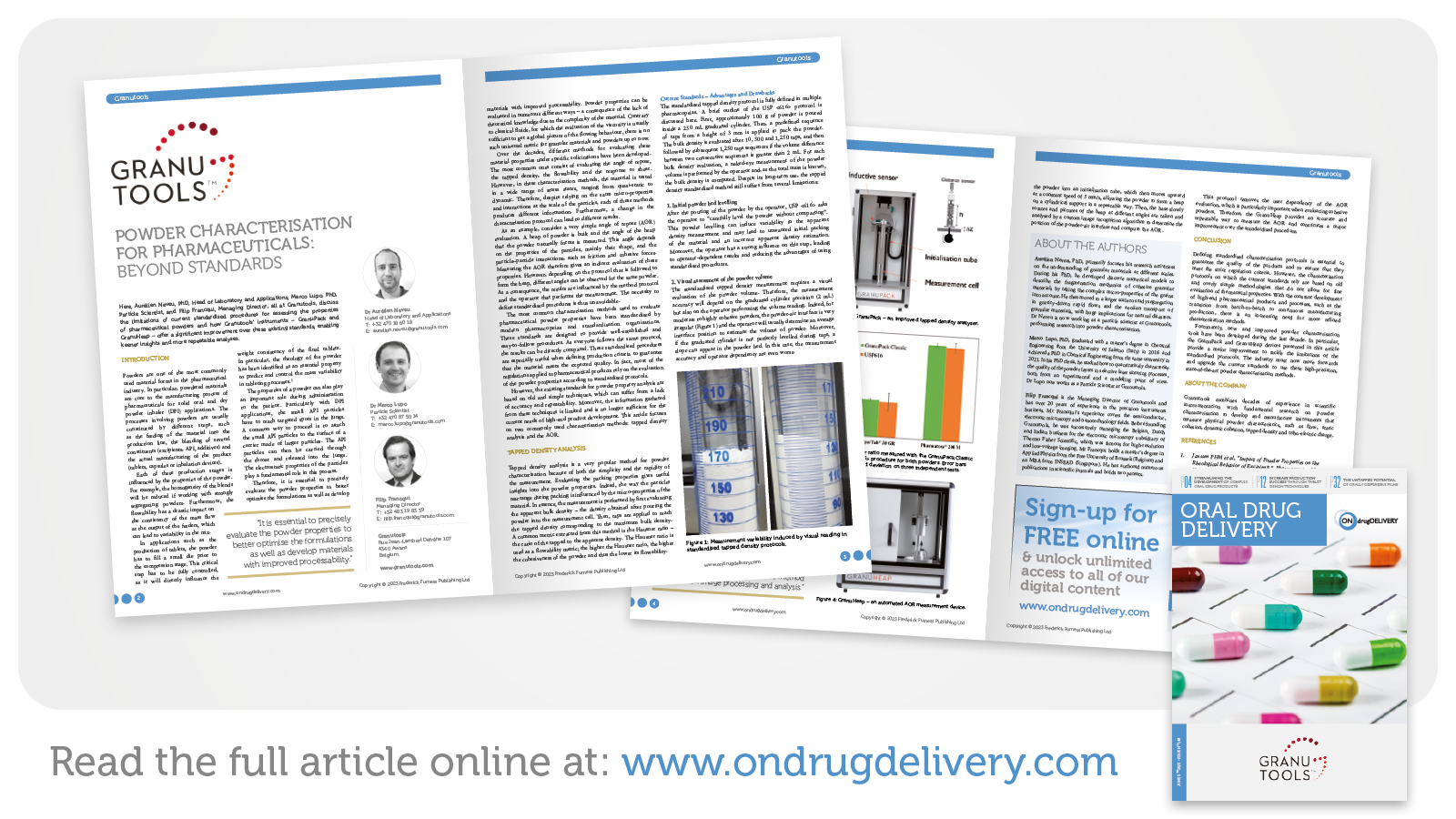
Papers
Powder Characterisation for Pharmaceuticals: Beyond Standards
Neveu A, Lupo M, Francqui F, “Powder Characterisation for Pharmaceuticals: Beyond Standards”. ONdrugDelivery, Issue 148 (May/June 2023), pp 16–19.
In this paper, we discuss the limitations of current standardized procedures for assessing the properties of pharmaceutical powders and how Granutools’ instruments offer a significant improvement over these existing standards, enabling keener insights and more repeatable analyses.
Powders are one of the most commonly used material forms in the pharmaceutical industry
Powdered materials are core to the manufacturing process of pharmaceuticals for solid oral and dry powder inhaler (DPI) applications. The processes involving powders are usually constituted by different steps, such as the feeding of the material into the production line, the blending of several constituents and the actual manufacturing of the product.
Each of these production stages is influenced by the properties of the powder. For example, the homogeneity of the blends will be reduced if working with strongly segregating powders. Furthermore, the flowability has a drastic impact on the consistency of the mass flow at the output of the feeders, which can lead to variability in the mix.
The properties of a powder can also play an important role during administration to the patient, particularly with DPI applications.
Therefore, it is essential to evaluate the powder precisely properties to optimize the formulations as well as develop materials with improved processability.
Current Powder Characterization methods and limitations
Over the decades, different methods for evaluating these material properties under specific solicitations have been developed. The most common ones consist of evaluating the angle of repose, the tapped density, the flowability and the response to shear. However, in these characterization methods, the material is tested in a wide range of stress states, ranging from quasi-static to dynamic. Therefore, despite relying on the same micro-properties and interactions at the scale of the particles, each of these methods produces different information. Furthermore, a change in the characterization protocol can lead to different results. The necessity to define standardized procedures is thus unavoidable.
The most common characterization methods used to evaluate pharmaceutical powder properties have been standardized by modern pharmacopeias and standardization organizations. These standards are designed to provide well-established and easy-to-follow procedures. As everyone follows the same protocol, the results can be directly compared. These standardized procedures are especially useful when defining production criteria to guarantee that the material meets the expected quality. In fact, most of the regulations applied to pharmaceutical products rely on the evaluation of the powder properties according to standardized protocols.
However, the existing standards for powder property analysis are based on old and simple techniques, which can suffer from a lack of accuracy and repeatability. Moreover, the information gathered from these techniques is limited and is no longer sufficient for the current needs of high-end product development.
Advanced Powder Characterization Methods: Tapped Density Analysis & Angle of Repose
This article specifically focuses on two commonly used characterization methods: tapped density analysis and the angle of repose (AOR).
The GranuPack and GranuHeap devices, highlighted in this article, offer significant advancements to overcome the limitations of standardized protocols. It is now imperative for the industry to embrace these high-precision, state-of-the-art powder characterization methods and update the existing standards accordingly. By doing so, pharmaceutical manufacturers can unlock deeper insights and enhance the efficiency and effectiveness of their production processes.

